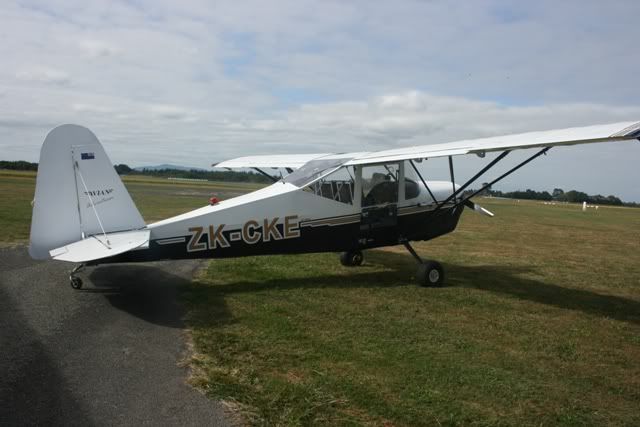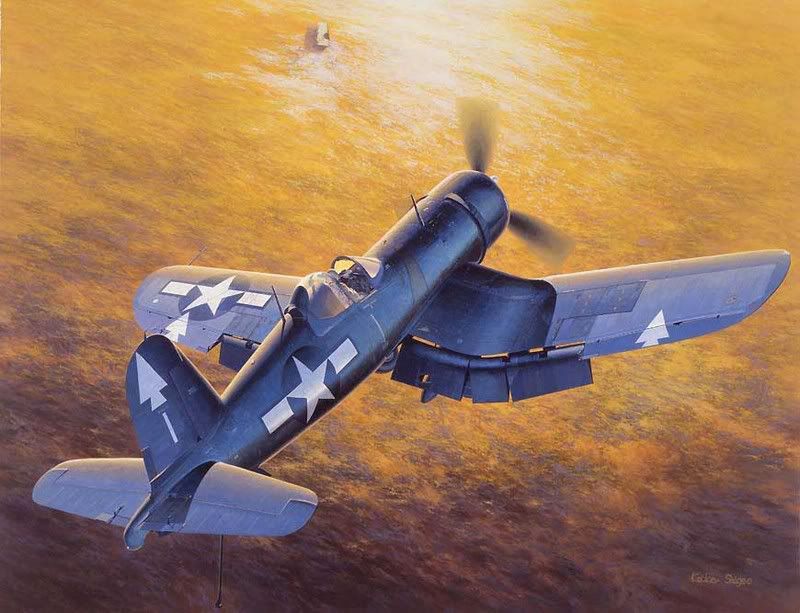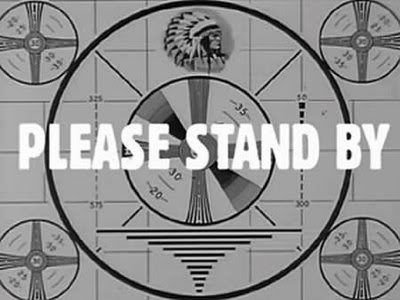|
|
Post by Dave Homewood on Dec 21, 2005 18:37:28 GMT 12
Here's some snippets of history of the way things may have been fo the RNZAF in the Pacific if plans hadn't changed:
When ordering replacements for the Hudsons, the RNZAF wanted to purchase B-25 Mitchells. However as this was being done, the US service handling our purchasing switched from Army to Navy, and we were given the much less desired Venturas (which NZ'ers were familiar with from 487 (NZ) Sqn who hated them)
Also, the RNZAF ordered 206 A-24 Banshee divebombers to form four divebomber squadrons with. These were to be No.s 25-28 Sqns. Delays in the production dragged out, and then when the purchasing commision switched to Navy NZ cancelled the order and ordered Dauntless's instead. No. 25 Squadron formed at Seagrove and trained on borrowed SBD-3's and -4's whilst they waited for the new RNZAF SBD-5's. On finishing training they moved to the Pacific with -5's and No. 26 Sqn was formed using the borrowed earlier models. They began training on them, but after two weeks the RNZAF had a switch in planning and they cancelled any further Dauntless deliveries. No. 26 Sqn was disbanded. It had been our second and most short-lived Dauntless Sqn. Later 26 Sqn reforemed with Corsairs in the divebombing role.
Had the atomic bomb not gone off, No. 14 Sqn was apparently about to switch to P51-D's and join an Australian Wing at Okinawa and prepare for the invasion of Japan. So the bomb undoubtedly saved some No. 14 Sqn lives
Another snippet, in 1942 when the RNZAF announced to the public they were forming a torpedo bomber squadron (which became No. 30 Squadron and never actually worked in the torpedo role), the NZ Herald ran a story surmising that NZ was to get a squadron of Fairey Swordfish. I guess they were stuck in the obsolete biplane mindset having watched Vincents and Baffins defend NZ for half the war!
Some good What-if model projects there, imagine a Swordfish in Pacific Blue/NZ Green camouflage with operational roundels and Plonky nose art.
Anyone else got more what-if, alternate dimension stories?
|
|
|
|
Post by Bruce on Dec 22, 2005 22:12:41 GMT 12
What if Japan attacked NZ in 1943ish?
In this hypothetical situation Japanese amphibious landings would be made at Ruakaka, south of Whangarei, in order to seize the deep water port. at the same time a smaller force would land at the quiet seaside town of Orewa, to cut off supplies to the US forces near Warkworth, and to neutralise the base at Whenuapai. This would not be entirely sucessful due to the US fighter squadrons at Ardmore and Seagrove. Whenuapai and hobsonville hold out and a defensive line is formed near Albany. In the meantime the Japanese force from Whangarei is landing, but being hounded by aircraft from Waipapakauri, Kaitaia and Kaikohe airfields. The start southwards towards Warkworth but get bogged down on the apalling northland roads. US marines and NZ army Neutralise the Orewa Pocket and form a defensive line north of Warkworth.
Further Amphibious landings are made at Raglan, Kawhia and Awakino. The Awakino force is to head inland and secure the railway line at Te Kuiti, and the King country coalfields. The Raglan and Kawhia forces are to take Hamilton with its Munition factory, The Power stations at Horahora and Arapuni and the Huntly coalfields. Without power from the waikato, or coal for the Kings wharf power station, Auckland is in darkness. Next push for the Japanese is over the Kaimais to Tauranga to capture another deep water port.... What shall become of little ol NZ?
|
|
|
|
Post by corsair67 on Dec 22, 2005 22:34:35 GMT 12
I know how to stop the Japs in their tracks: get someone to steal all their bicycles! Someone should of done that in Malaya! ;D
|
|
|
|
Post by Dave Homewood on Dec 22, 2005 22:44:08 GMT 12
Hmmm, not a pretty picture.
I don't think a Japanese invasion in 1943 would have succeeded. Had it been early to mid 42, maybe. Mid 1943 we had Hudson crews fully trained, Several P40 squadrons, loads of US troops. lots of tanks.
A little known fact is the NZ Army sent loads of soldiers up to Waipapakauri as soon as the Japs entered the war as they considered that area to be most at risk. Some were up as far as defending 90 mile beach. I have interviewed two ex-soldiers who were at Waipapakauri. Both had been sent upfrom the comfrt of Hopu Hopu to the wilds of Northland. They lived by the beach in tents andonly had paliasses. They looked eniously at the airmen at Waipap with their nice hot food, mattresses, buildings, et. When the offer went out mid-1942 for Army personnel to switch to the RNZAF, a bid to boost Air Force numbers, loads of these guys jumped at the chance to jump ship. They didn't care about the job, it was the comforts they wanted! That's why the Army called RNZAF the Blue Orchids, because by comparison they were pampered.
Anyway, so the Army would have been available in Northland. In Tauranga, the Central Flying School had a FAFAI Squadron that would have gone after the ships in suicide raids, and possibly succeeded. The Home Guard was particularly strong around Ralan, and Hamilton, and there was only one raod acorss then through the hills which was always heavily defended by Home Guard. They'd have staved ff the advancing Nip hoardes till the Army arrived from camps like Hopu Hopu and Cambridge.
By 1943 there were also loads of RNZAF personnel in Hamilton who'd have picked up a rifle.
Further south at Te Kuiti, well, let them have that. Once they realise where they are, they'll turn round and hop back on their boats.
|
|
|
|
Post by Bruce on Dec 23, 2005 8:46:44 GMT 12
Yeah, in my scenario, I reckon the invaders would have some problems. At awkino the home guard would blow up the road tunnel through the awakino gorge, and commence guerilla counter offensives from the Tiger country in the backblocks there. Due to the nature of the beach, they would not be able to land heavy equipment, and with good roads through Taranaki, NZ and US forces could move north from Wellington and fight a courageous battle. With the main trunk railway intact, other forces could head north and strenthen the Waikato.
Raglan and Kawhia invasion forces could be slowed down in the hills by the Home guard, enough to get regular Army units in place. Unless the Japs had a carrier force, they would have to take the partly completed Raglan airfield and fly in fighter aircraft to cover the advance. With the roads in this area following ridges, it would be easy pickings for NZ and US fighter bombers.
The Scenario is hypothertical, but a Japanese invasion was real possibility at one stage. NZ in the 1940s had coalfields and timber resources that would have been very useful, also productive farmland to supply garrisons in the central Pacific. Taking NZ would completely encircle Australia, cutting it off from US supplies, and Britain would be busy with its own problems in Europe to provide supplies. This could pressure Australia into a non-agression Pact (a sucessful invasion of Aussie would be impossible) to take them out of the equation.
Interesting "What if" exercise anyway....
|
|
|
|
Post by Dave Homewood on Dec 23, 2005 12:15:05 GMT 12
By 1943 the New Zealand Home Guard was a well trained and equipped force of 100,000 men too by the way. That is not far short of the number of men in the Army at that time. Remember the population of NZ was just over a million then, about 1.1 million. The Army peaked at 140,000.
The Home Guard formed initially in August 1940 as a legitimate Government backed force. Prior to that there had been private armies run by the RSA too. So they'd been around a long time by the time Japan entered the war. The HG was formed due to the German threat of invasion.
An interesting fact is the Home Guard went into 'battle' in huge numbers posing as the enemy to the NZ Army (29th Battalion from memory) in a large scale week long exercise in the Kaimai hills. The exercise was to prepare the Army for combat in the Pacific where they were soon headed, and the scenario was based around the Kaimais being the Owen Stanley Range in PNG, with the HG being the Japs! It rained all week and they got authentic Owen Stanley quagmire to 'fight' in.
The carrier task force which was stopped dead in its tracks by the US Navy in the Battle of the Coral Sea was in fact headed to NZ as an advance of an invasion force. Later they found they had everything planned out to the minute detail, even had NZ money printed with Hirohito on, etc. They were planning to invade on he West Coast as it was less defended.
I think Craig has a point about the Japs and their bikes. A squadron of Vincents flying down every conceivable road that the advancing Japanese might use, with two erks in the back of each Vincent dropping handfuls of tin tacks would stop them.
|
|
|
|
Post by hairy on Dec 30, 2005 13:56:06 GMT 12
Just a couple of things; - if the war had started a few months later we would of had some, if not all of our Wellingtons (30 a/c-2 Sqdns). they would have really helped when we had the German raiders causing merry hell off our coast. - we had an order for 100(!) B-24s for delivery in mid to late 1944, but the order became delayed and then further delayed untill it was cancelled. I presume they were to be manned by bomber crew returning with the wind down of the European war. - we also had a further 41 C-47s on order when the war ended and the order was cancelled. -the total order for P-51s was for 137 a/c, when the war ended the order was cancelled apart for the 30 that were already on the water and committed to. (interesting side note to this was that the undelivered RNZAF fuselages were subsequently bought by Cavilier aircraft to support their P-51 program resulting in quite a few 'Warbird' P-51s having RNZAF connections.) Just imagine what would be left now if all these orders had been filled! (not to mention the 40 target towing Brewster Bermudas that were at one time on order also)  |
|
|
|
Post by hairy on Dec 30, 2005 13:58:13 GMT 12
P.s We only got the P-51s because we could not get anymore Corsairs, all future production was allocated to the U.S Marines.  |
|
|
|
Post by Dave Homewood on Dec 30, 2005 14:12:14 GMT 12
Wow, that's some fascinating stuff Marcus. A great point about the Wellingtons. They very nearly made it to NZ. One very good thing about them not arriving however was that the RAF had sent a good number of their fully trained NCO's to NZ before delivery to train up the RNZAF guys in modern warfare. When war kicked off, the RAF told them to stay here, and those British NCO's, along with the Territorial Squadron chas, really formed the backbone of our Air Forces' groundstaff at the beginning of the war, and passed on much to the young green men who enlisted.
I never knew about the B-24's. The RNZAF flying heavy bombers in the Pacific, that's something very interesting. I'm sure they'd have been as famous as No. 75 Sqn was. They'd have looked wicked in our colours too.
The Duxbury/Ewing/Macpherson book "Aircraft of the Royal New Zealand Air Force" states NZ had ordered 370 Mustangs, so i guess the 137 were those built at cancellation?
There were also the 48 Lockheed PV-2 Harpoons ordered for delivery in Sept-Dec 1944, but only four arrived in March 1945 and entered short term service of just one or two months. I wonder how much they would have added to the Bomber Reconnaissance squadrons over and above the Ventura operations.
I had not heard of the Brwster Bermudas either, were they to replace the Vincent/Vildebeests doing target towing?
I guess another grrat What If is the fact that the RNZAF at one stage planned to send Vincents to Guadalcanal because the US was short of reconnaissance aircraft and we were short of Hudsons. Incredible, but true. Imagine the US Marines' reaction to their arrival!
|
|
|
|
Post by Bruce on Jan 1, 2006 14:15:56 GMT 12
It is just as well we didnt ever get any Bermudas - they were a real disappointment (they were originally designed to meet the same spec as the Curtiss Helldiver) and suffered from extremely poor build quality (Brewster built Corsairs had the same problems). Brewster actually built a machine to shake and roll each nearly completed airframe around to retreive the loose screws and bolts floating around inside! (True!!!  ) Having done some research into the Harpoon when I built my model, It would have served NZ quite well, the additional wing area (Once they built it strong enough - the delivery delays were caused by a wing redesign) would give it better handling and load carrying capabilities. The US Navy had an extremely good run out of them, using them well after the war when the Neptune replaced them. Generally they were beefier, but a little slower and had thier armament set up for low level strike, rather than medium level bombing. If the bomber squadrons were not being wound down, I think the RNZAF would have found them ideal for the sort of Ops they were engaged in. How well would the P51s have coped in the pacific? The USAAF had some issues as they were a bit more "delicate" than the US navy machines and even the old P40s. The cooling system needed careful management and coral dust etc played havoc with the various prescision systems. I would guess the Kiwi Servicing units would have found a way to get the most out of them however - they had a reputation second to none! |
|













 )
) 